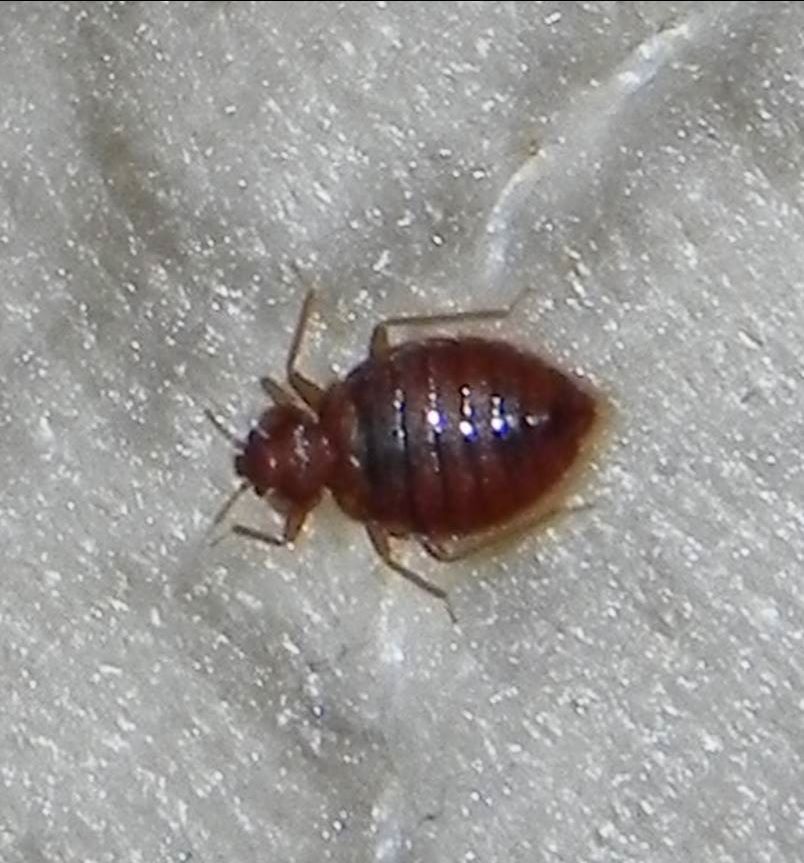Bed Bugs are one of the most notorious insects that infect almost every part of the world . Here is an article from getpocket website about misconceptions around Bed bugs .

Myth 1: Bedbugs can fly
Bedbugs lack wings, and therefore cannot fly. That is unless you put a blow dryer behind them, says Stephen Kells, a bedbug researcher at the University of Minnesota. Then they’ll fly about 1.2 meters. On their own, bedbugs crawl about a meter a minute, he says.
Myth 2: Bedbugs reproduce quickly
Compared with other insects, bedbugs are slow to reproduce: Each adult
female produces about one egg per day; a common housefly lays 500 eggs
over three to four days. Each bedbug egg takes 10 days to hatch and
another five to six weeks for the offspring to develop into an adult.
Myth 3: Bedbugs can typically live a year without a meal
Scientists debate this point, but evidence suggests that at normal
room temperature, about 23 degrees Celsius, bedbugs can only survive two
to three months without a blood meal. But because they are
cold-blooded, their metabolism will slow down in chillier climates, and
the insects may live up to a year without feeding.
Myth 4: Bedbugs bite only at night
Although bedbugs are generally nocturnal, they’re like humans—if
they’re hungry, they’ll get up and get something to eat. “If you go away
to visit a friend for a week and you come back and sit down on the
couch, even though it’s daytime the bedbugs will come looking for you,”
Schal says. Keeping a light on, then, unfortunately does not keep these
tiny vampires away.
Myth 5: Bedbugs live exclusively in mattresses
“‘Bedbug’ is such a misnomer,” Kells says. “They should also be called
pet bugs and suitcase bugs and train bugs and movie theater bugs.”
Bedbugs spread away from beds into living areas and can be seen on any
surface, he says, including chairs, railings and ceilings.
Myth 6: Bedbugs prefer unsanitary, urban conditions
“Bedbugs are terribly nondiscriminatory,” Schal says. Bedbugs can be
found anywhere from ritzy high-rises to homeless shelters. The
prevalence of the bugs in low-income housing is therefore not a result
of the insect’s preference, but of dense populations and the lack of
money to pay for proper elimination strategies. “Any location is
vulnerable,” Kells says. “But some people are going to have a harder
time getting control of them because it is such an expensive treatment.”
Myth 7: Bedbugs travel on our bodies
Bedbugs do not like heat, Kells says. They therefore do not stick in
hair or on skin, like lice or ticks, and prefer not to remain in our
clothes close to our bodily heat. Bedbugs are more likely to travel on
backpacks, luggage, shoes and other items farther removed from our
bodies.
Myth 8: Bedbugs transmit disease
Bedbug bites can lead to anxiety, sleeplessness and even secondary
infections, but there have been no reported cases of bedbugs
transmitting disease to humans. They do, however, harbor human
pathogens: At least 27 viruses, bacteria, protozoa and more have been
found in bedbugs, although these microbes do not reproduce or multiply
within the insects. Canadian researchers announced (
pdf) in the June 2011 issue of
Emerging Infectious Diseases that bedbugs isolated from three individuals in a Vancouver hospital carried methicillin-resistant
Staphylococcus aureus, aka MRSA. Still, there have been no reported cases that the bugs actually transmit human disease.
Myth 9: We should bring back DDT
When the controversial pesticide DDT was banned in 1972, most bed bugs
were already resistant to it, Schal says, and today’s populations are
even more widely resistant thanks to the use of a new class of
pesticides. Pyrethroids, the main class of pesticides used against
bedbugs today, targets sodium channels in bedbug cells, just like DDT.
Consequently, as bedbugs develop resistance to pyrethroids, they also
become cross-resistant to DDT.
Myth 10: You can spray bedbugs away
Thanks to pesticide resistance, those cans of spray at your local hardware store simply will not do,
Schal says, adding: “Relying strictly on chemicals is generally not a
good solution.” The most effective solutions are fumigation and heat
treatments, but these can cost a cool $2,000 to $3,000 apiece for a
single-family home. Scientists are diligently pursuing other strategies,
including freezing and bait similar to that used for cockroaches. In
the October 2010 issue of the
Journal of Economic Entomology Schal and colleagues at the U.S. Department of Agriculture
published a technique
that employs inexpensive infrared and vibration sensors to track bedbug
movement, which could be applied to the development of automated traps
that detect the pests.
Megan Scudellari is a freelance science journalist based in Durham, North Carolina, specializing in the life sciences. She is a correspondent for the Scientist magazine and has contributed to Technology Review, Nature Medicine, Pacific Standard and more. She is currently writing her first textbook, a college biology text.
You can aces the whole article from https://getpocket.com/explore/item/top-10-myths-about-bedbugs?utm_source=pocket-newtab













